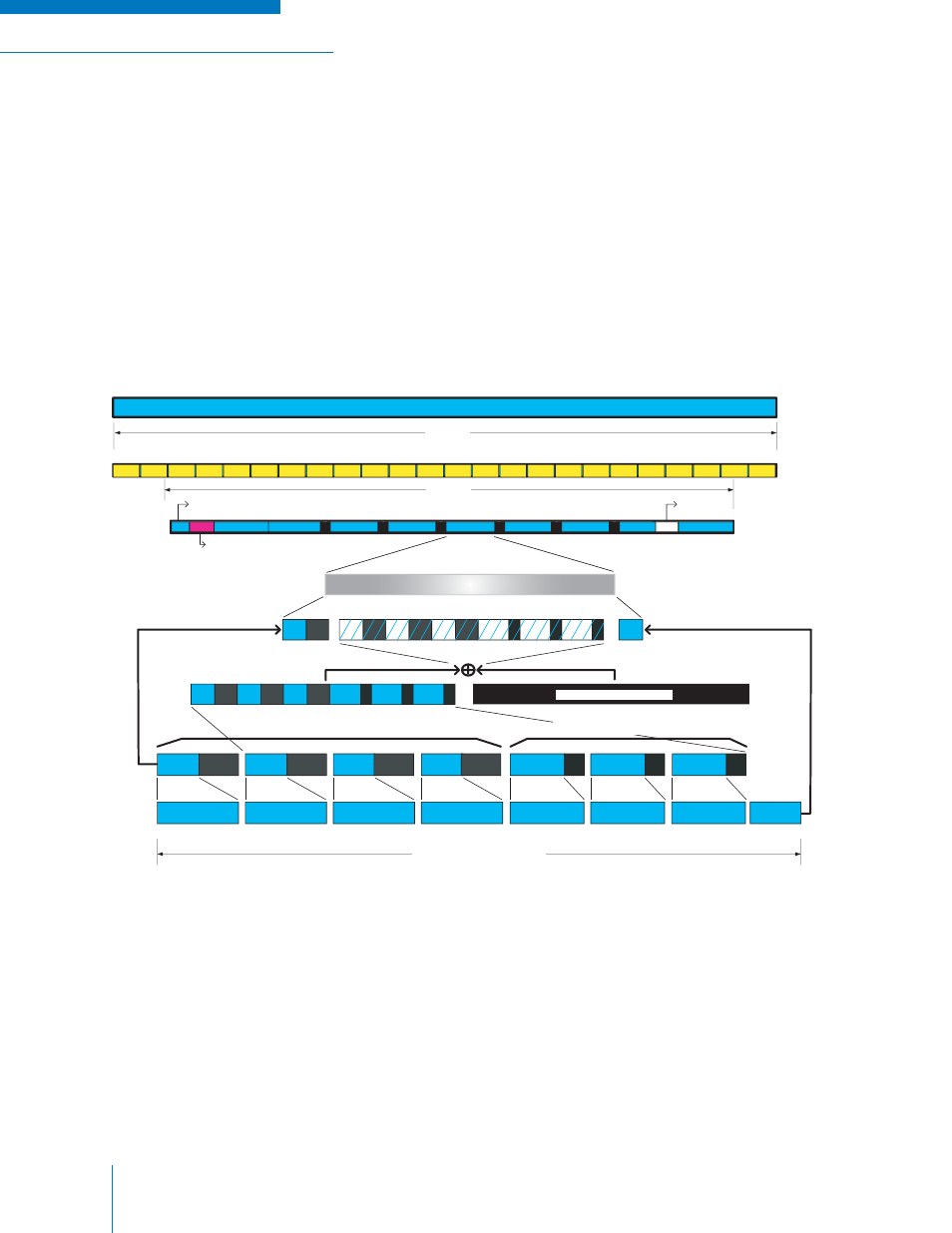Voice code words – Codan Radio P25 Training Guide User Manual
Page 60

TRAINING GUIDE | P25 RADIO SYSTEMS
Chapter 4: Anatomy of the Common Air Interface
Page 52
VOICE CODE WORDS
The IMBE™ vocoder converts speech into a digital bit stream where the bit stream is broken into
voice frames of 88 bits in length for every 20 ms of speech. This corresponds to a continuous average
vocoder bit rate of 4.4 kbps. Voice frames consist of 8 information vectors, labelled u_0, u_1, ... u_7.
Voice frames are encoded into a 144 bit voice code word as follows:
The voice frame bits are rated according to their effect on audio quality and are then protected using
Golay and Hamming codes. The 48 most important bits (u_0 through u_3) are error protected with four
(23,12,7) Golay code words. The next 33 most signifi cant bits (u_4 through u_6) are error protected
with three (15,11,3) Hamming code words. The last 7 least signifi cant bits (u_7) are not error protected.
Construction of the IMBE™digital bit stream into voice code words is given in Figure 4-5.
Figure 4-5: Voice Code Word
After the voice data has been error protected using the Golay and Hamming codes, a 114 bit pseudo
random sequence (PN sequence) is generated from the 12 bits of u_0. The error protected voice data
in u_1 through u_6 is then bit-wise exclusive-ored with the PN sequence. This information is then
interleaved throughout the voice frame to resist fades.
LDU1 and LDU2
1728 bits
1680 bits
VC1
VC2
VC3
VC4
VC5
VC6
VC7
LSD
VC9
FS 48 bits
NID 64 bits
Low Speed
Data 32 bits
VC8
Encoded with (23,12,7)
Standard Golay Code
U_0
U_1
U_2
U_3
U_4
U_5
Voice Data 20 ms 88 bits
U_6
12 bits
12 bits
12 bits
12 bits
11 bits
11 bits
11 bits
7 bits
88 bits Voice Data +
56 bits Parity bits
U_7
114 bit PN sequence
Exclusive OR
Encoded with (15,11,3)
Standard Hamming Code
Interleave
